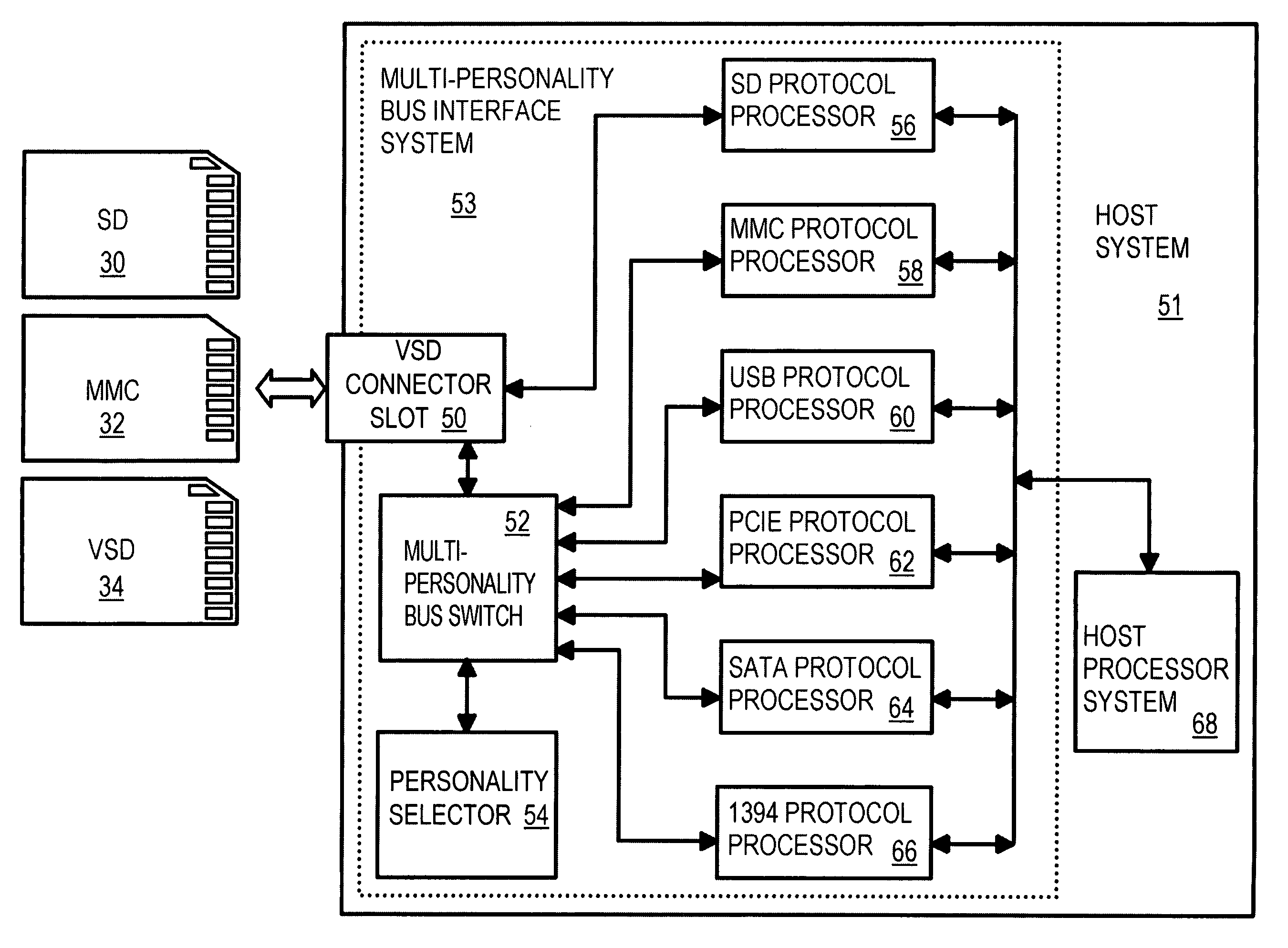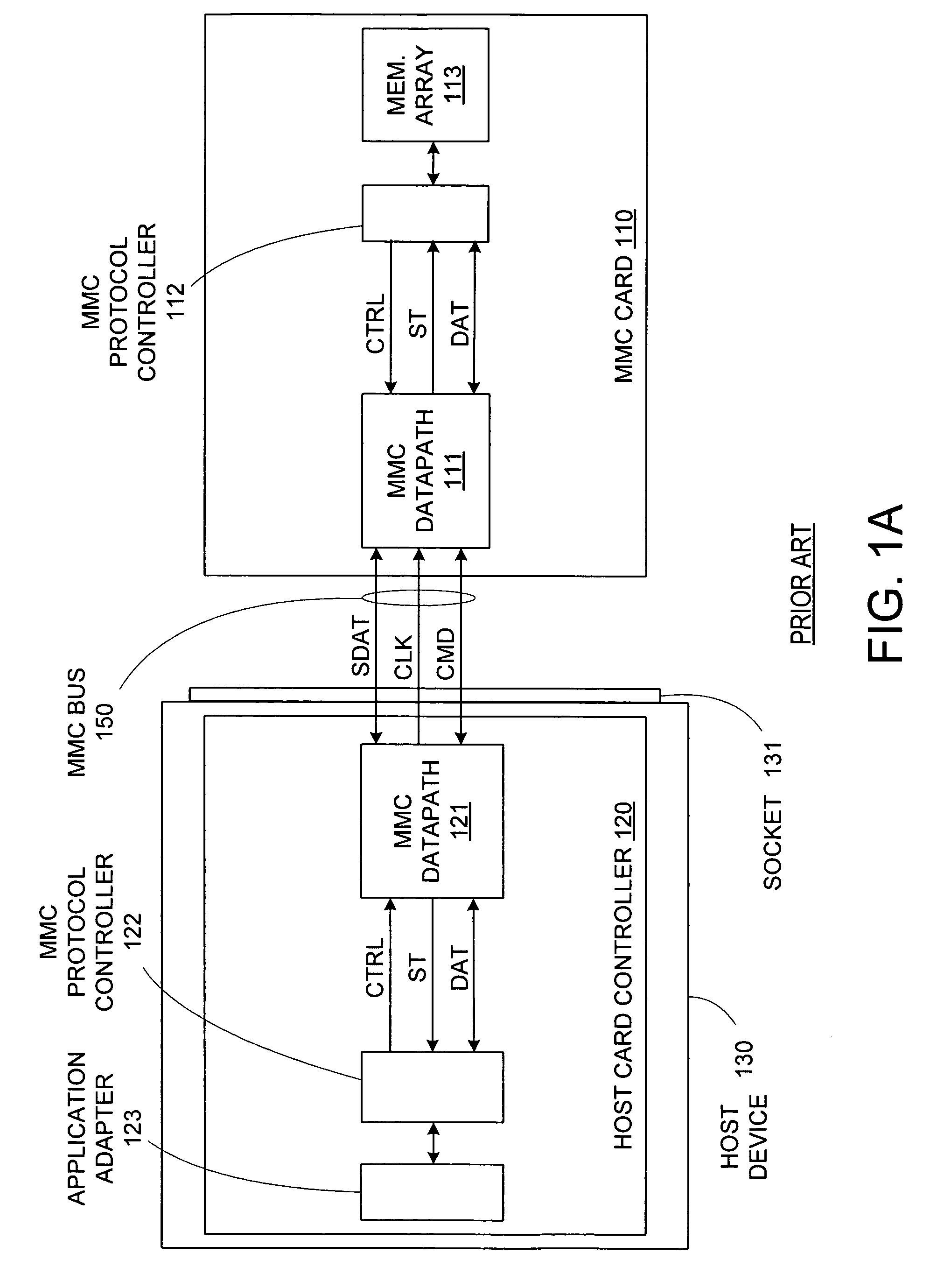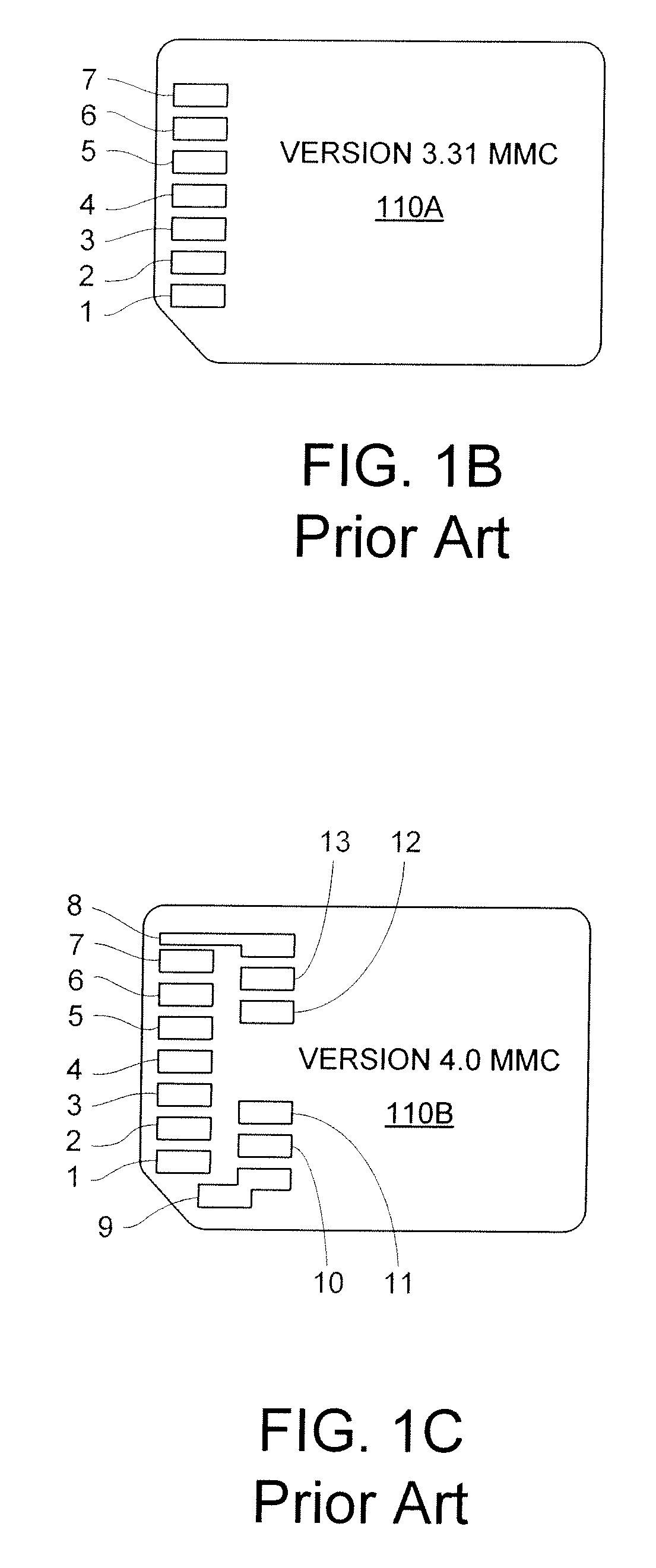Differential data transfer for flash memory card
a flash memory card and data transfer technology, applied in the direction of electrical apparatus construction details, coupling device connections, instruments, etc., can solve the problems of increasing reducing the data bandwidth of conventional flash memory cards, and reducing the power consumption of flash memory cards. , to achieve the effect of reducing power consumption and improving data bandwidth
- Summary
- Abstract
- Description
- Claims
- Application Information
AI Technical Summary
Benefits of technology
Problems solved by technology
Method used
Image
Examples
Embodiment Construction
[0056]Conventional flash memory cards and the devices that use those cards have relatively low data transfer rates that can limit the utility of those flash cards in bandwidth-intensive applications. By enabling a differential data transfer protocol for use with flash memory cards, the data transfer rate to and from those cards can be significantly increased without requiring additional pins or increasing overall card size.
[0057]The differential data transfer capability can be combined with legacy (clocked data transfer) capabilities to enhance the compatibility of the flash memory card. For example, an SD card modified to use a higher-speed serial bus can be termed a very-high-speed SD card, or a VSD card, while a host that can communicate with a VSD card is a VSD host. A VSD card with legacy capabilities can act as a SD card when inserted into a legacy SD host, while a VSD host with legacy capabilities can read inserted SD cards. Thus the VSD card and host are backward-compatible....
PUM
 Login to View More
Login to View More Abstract
Description
Claims
Application Information
 Login to View More
Login to View More - R&D
- Intellectual Property
- Life Sciences
- Materials
- Tech Scout
- Unparalleled Data Quality
- Higher Quality Content
- 60% Fewer Hallucinations
Browse by: Latest US Patents, China's latest patents, Technical Efficacy Thesaurus, Application Domain, Technology Topic, Popular Technical Reports.
© 2025 PatSnap. All rights reserved.Legal|Privacy policy|Modern Slavery Act Transparency Statement|Sitemap|About US| Contact US: help@patsnap.com



